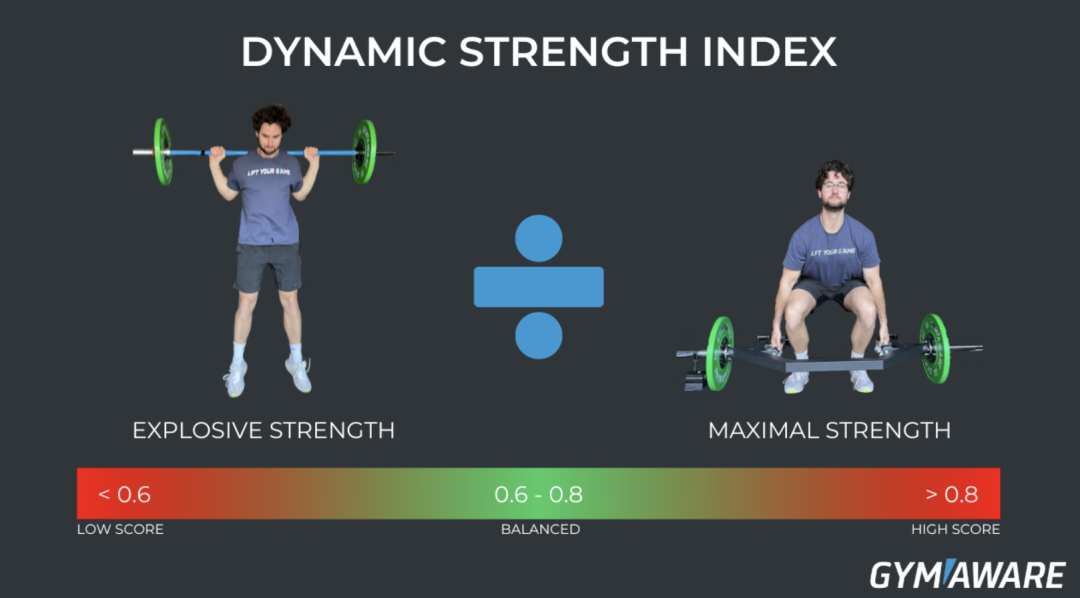
This article will comprehensively introduce the Dynamic Strength Index (abbreviated as DSI).
Table of Contents
-
What is the Dynamic Strength Index?
-
Why is the Dynamic Strength Index Important?
-
How to Test Your Dynamic Strength Index
-
DSIFormula -
Training for the Dynamic Strength Index: How to Improve
DSI -
DSIvsRSIvs Force-Velocity Curve -
Dynamic Strength vs Static Strength
-
Conclusion
Introduction to DSI
The Dynamic Strength Index (DSI) is a method for measuring the relationship between an athlete’s absolute strength or maximum strength and their explosive strength. Coaches can use this metric to determine whether an athlete should focus on enhancing strength or improving explosiveness.
DSI can be used in both upper and lower body measurements. When combined with the Reactive Strength Index, Force-Velocity Profile, and movement screen, coaches or sports scientists will have sufficient data to develop personalized training plans that truly benefit athletes.
What is DSI?
The Dynamic Strength Index or Explosive Strength Index is an indicator that measures the relationship between an athlete’s maximum strength and their explosive strength. More specifically, DSI is the ratio between the peak force produced by an athlete during explosive movements and the peak force produced during dynamic or isometric absolute strength movements.
Most coaches use CMJ to measure peak force in explosive movements. For maximum strength movements, they typically use the 1RM squat or the Isometric Mid-Thigh Pull (IMTP).
In my current position as the Head of Sports Science at Rise Sport Performance, we have been using hex bar deadlifts as part of our maximum strength testing. I will explain this in detail in later sections. The hex bar deadlift is simply a safer testing method.
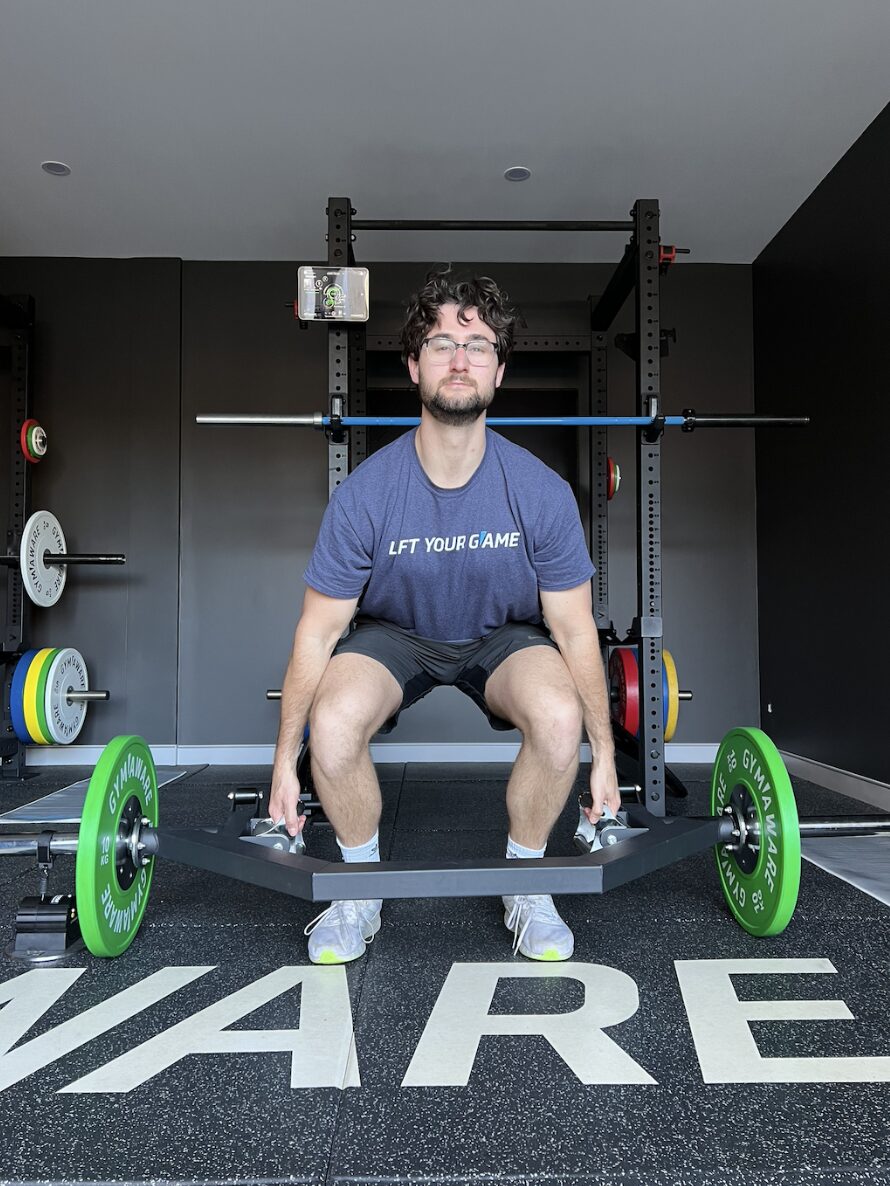
In practical applications, DSI is a measure of an athlete’s ability to generate maximum force and effectively utilize it in specific sports.
Later, I will explain how to use GymAware RS or FLEX for three simple tests that can provide coaches with enough information to develop personalized training plans as needed, even in large teams. I believe this is the direction of development in strength training.
Why is DSI Important?
In the field of sports, the value of strength depends on its application in the sport being performed. The importance of DSI lies in demonstrating an athlete’s ability to generate force in rebound-type movements (such as CMJ) and then comparing it to force output in maximum strength movements.
Once coaches obtain DSI reports, they will know whether athletes need to focus on heavy strength training, rebound training (like jump-enhanced training), or both.
Whether you are a coach, an athlete, or a parent of an athlete, understanding the importance of maximum/absolute strength and rebound/explosive strength is very beneficial.
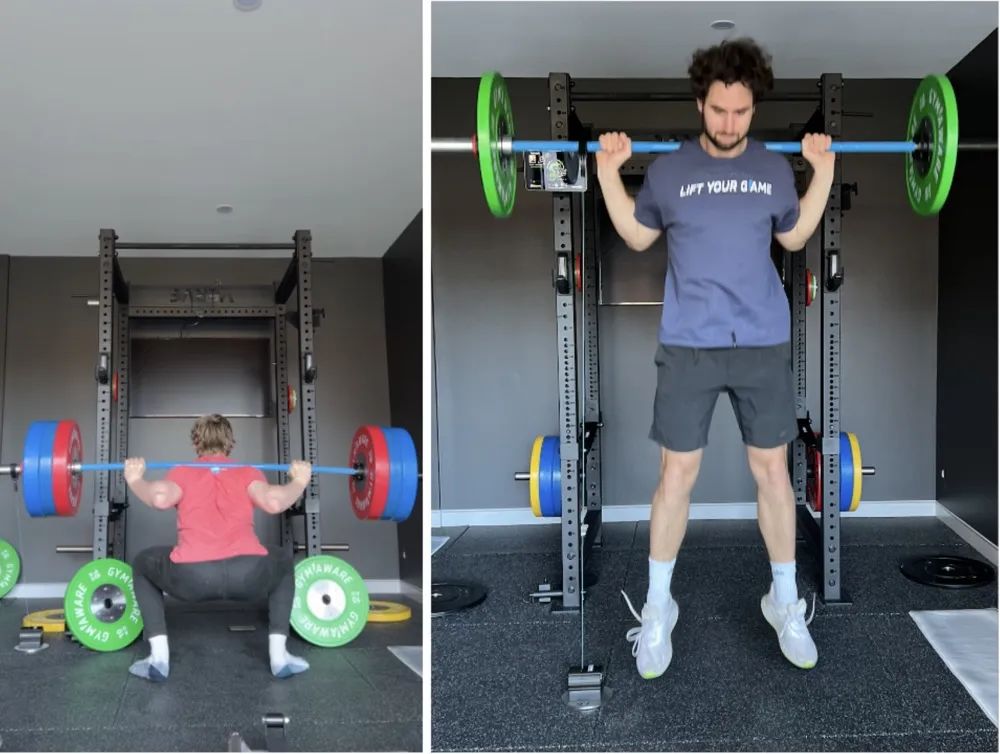
Absolute strength is clearly linked to sprint speed, change of direction, jumping, and almost all athletic activities you can think of. Absolute strength is also related to young athletes showcasing their athletic abilities early in their careers and their ability to gain an edge over competitors, allowing them to fully demonstrate these qualities.
Additionally, research by Dr. Avery Faigenbaum shows a significant connection between resistance training and reduced injury risk.
Absolute strength or maximum strength output is one of the requirements for athletes to produce higher power, which is what we all strive for. Dr. Bryan Mann[1] explains the importance of absolute strength in his research, particularly in the first two years of an athlete’s resistance training, as increases in absolute strength are directly related to increases in all strength qualities.
However, as an athlete’s career progresses, if they continue to focus on increasing their 1RM, there will be significant adaptive changes that do not necessarily lead to improvements in explosiveness. Explosive movements such as jumping, changing direction, and sprinting require athletes to produce force at very high rates. At this point, many factors come into play, such as the stretch reflex, elasticity, and pennation angle, to ensure each athlete can produce explosive peak force.
Simply put, if an athlete becomes stronger in their 1RM, they will also improve their ability to produce force quickly. This is why many high school coaches notice that when an athlete gets stronger, they also become faster and jump higher.
The key to movement is the rapid production of force, which is where DSI comes into play. The ground contact time for sprinting is around 80-90 milliseconds, the swing speed for baseball hitting is 70 miles per hour, or for all VBT training enthusiasts, it’s 31.3 meters per second.
DSI will tell us whether you need strength or speed to become the athlete you aspire to be.
How to Measure DSI
Now that we understand the importance of DSI, it’s time to test it. Here are four simple steps to measure the Dynamic Strength Index:
-
Decide on the movement combinations to use
-
Use a VBT device like GymAware RS to measure the peak force of the movements
-
Calculate
DSIusing the Dynamic Strength Index formula -
Apply the test results to training
Let’s delve into these four steps.
Step 1: Choose Your DSI Movement Combinations
To calculate DSI, you need to choose a combination of an explosive movement and a strength movement. Let’s focus on lower body movements, while keeping in mind that you can also make similar choices for upper body movements.
Explosive Movement
CMJ is typically used for explosive rebound-type movements. You can also choose a concentric-only jump.
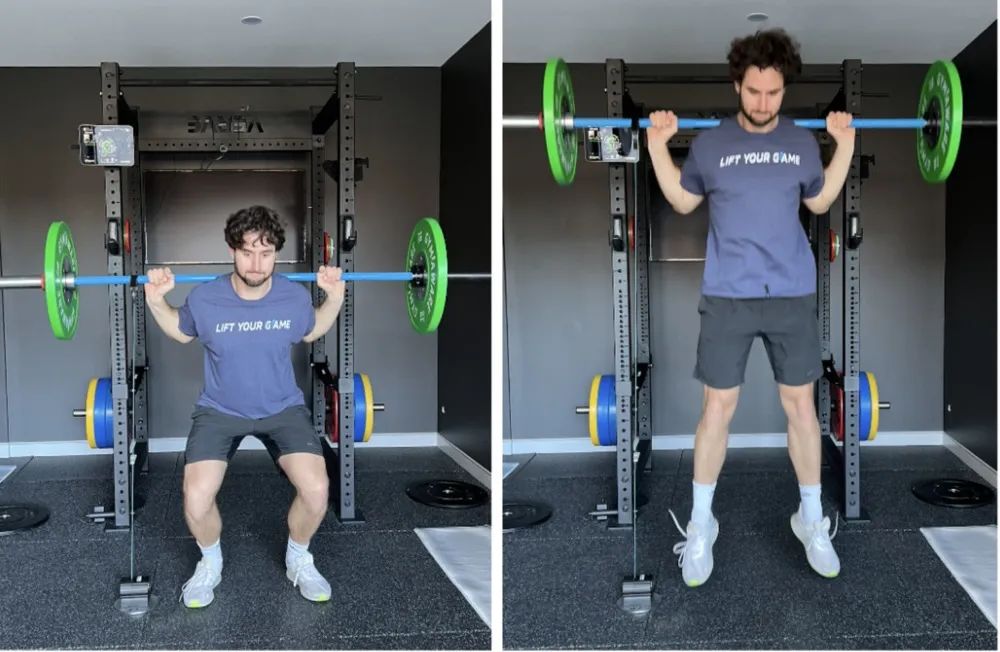
Strength Movement
The strength movement can be isometric (muscle length remains unchanged) or dynamic (including concentric and eccentric muscle contractions).
For isometric contractions, IMTP is the standard choice for isometric strength movements.
Traditionally, squats have been used for dynamic strength movements, but you can also use hex bar deadlifts or other multi-joint dynamic strength movements.
Movement Combination: Static Performance
If you want to compare an athlete’s ability to generate peak force in a static position, it makes sense to compare hex bar deadlifts or IMTP (strength) with static squat jumps (explosive). This way, you can understand the athlete’s ability to produce peak force without SSC.
For example, if you are training sprinters or rugby players aiming to improve their start ability in a 40-yard sprint, these movements will clearly demonstrate their ability to produce peak force without SSC.
Movement Combination: Dynamic Performance
If you want to compare an athlete’s ability to generate peak force in SSC, it makes sense to pair dynamic movements that require SSC. For example, pairing squats (strength) with CMJ (explosive).
An athlete may have the ability to produce peak force in a static position, but unless their joint movements exhibit neuromuscular coordination, their dynamic performance may need improvement. I have witnessed this in my own research.
By calculating DSI scores in different ways, coaches can gain clearer insights into the tested athlete’s condition.
Step 2: Measure Peak Force
If you have a VBT device, such as GymAware RS or FLEX, this step is very simple. Just connect the device to the barbell and observe the peak force generated in both the strength and explosive movements.
Here’s how to measure CMJ using a VBT device.
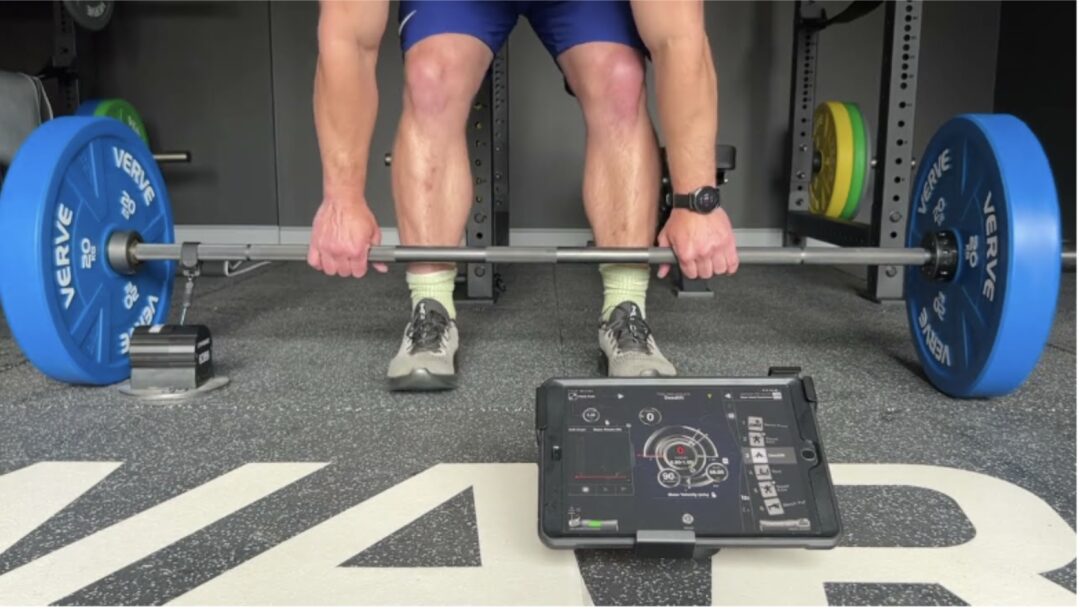
Step 3: Calculate the Dynamic Strength Index
The calculation of DSI is done by first measuring the peak force of the rebound (explosive) movement and then measuring the peak force of the dynamic or isometric strength movement. The DSI formula can then be used for calculation.
DSI Formula:
Dynamic Strength Index (DSI) = Rebound Peak Force ÷ Dynamic or Isometric Peak Force
For example:
-
Peak force of CMJ = 2620 N
-
Peak force during isometric IMTP = 3300 N
-
DSI = 2620/3300 = 0.79
Step 4: Apply the DSI Test Results to Training (Case Study)
Coach Joe Kenn has been my mentor for many years, and he has won multiple NSCA Coach of the Year awards and served as the Senior Strength Coach Director for the NFL. He always says that testing and techniques only work when coaches put the information into practice. Without taking action on the test results, you won’t achieve much.
Now that you know your DSI, here’s how to utilize it. Based on the research by Suchomel et al. (2020), we can develop some training parameters based on the DSI results.
| DSI Value | Training Recommendations |
| < 0.6 | Rebound/Enhanced Training |
| 0.6~0.8 | Rebound and Maximum Strength Training (concurrent) |
| > 0.8 | Maximum Strength Training |
With athlete Ryan Grimsland, I wanted to study his ability to produce peak force in the stretch-shortening cycle. I used the squat and CMJ performed on GymAware RS. Here’s an example:
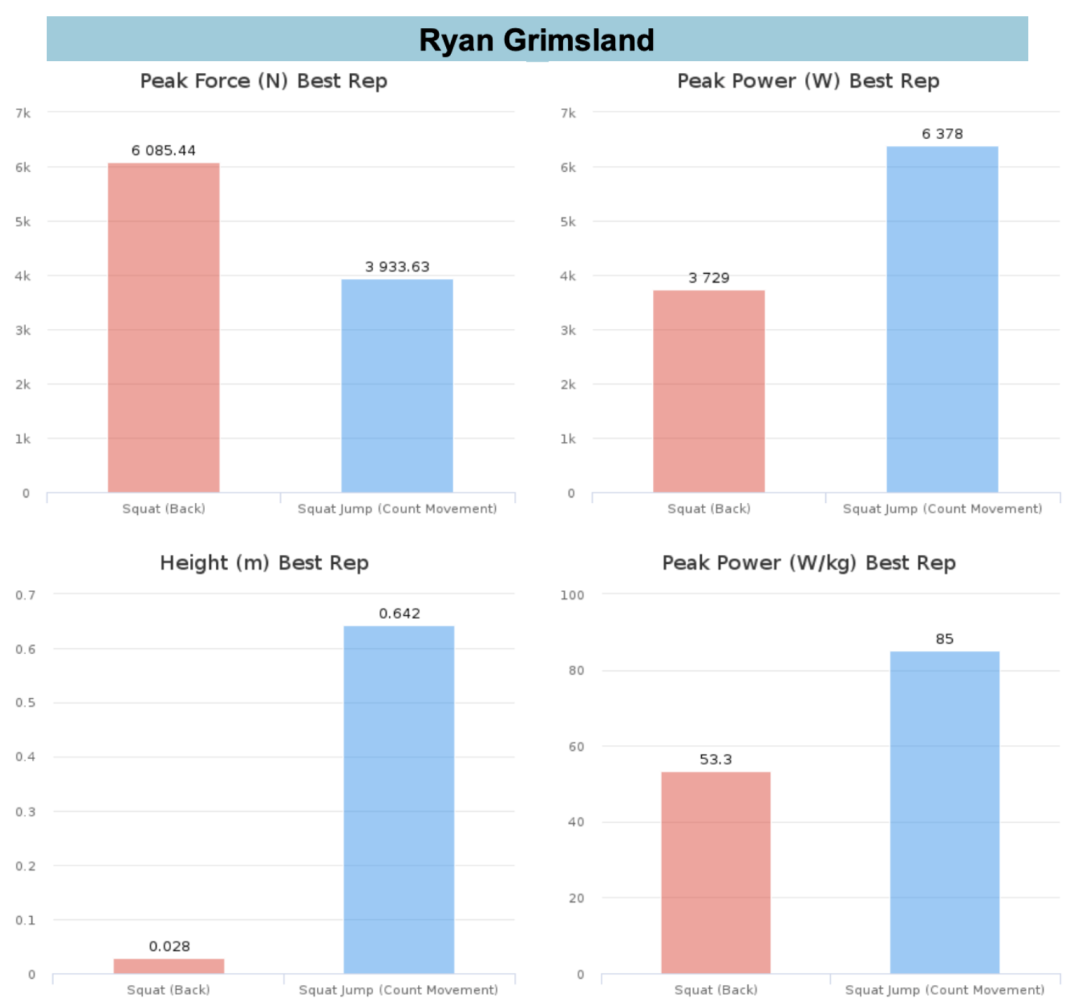
When performing maximum loaded squats, Ryan Grimsland achieved a peak force of 6085.44 N, and the peak force for CMJ was 3933.63 N, resulting in the following DSI:
DSI= 3933.63N/6085.44N = 0.65
Based on the above recommendations, he needs to focus on both rebound training and maximum strength training, which is precisely what an aspiring Olympic weightlifter needs. Many weightlifters across the country should undergo this test. I see many athletes who, when feeling slow in competition, will push their maximum squat capacity in training. However, feeling slow in competition actually means they are not fully utilizing their peak force capacity, so continuing to push squat weights is a waste of time.
Training for DSI: How to Improve DSI
DSI allows you to make adjustments based on the athlete’s needs, thus creating a foundational training plan. Let’s look at a very simple example:
Basic Plan for DSI Scores (<0.6)
If your Dynamic Strength Index is low, you can improve it through rebound and enhanced training. In strength training, you can pursue relatively high-speed targets. For example:
Enhanced training for the day:
-
Box jump training 3 sets × 5 reps, at a height of 80% of maximum height
Strength training for the day:
-
Front squat 5 sets × 5 reps, at 70% weight, or using VBT training, with a preferred speed of 0.7m/s
-
Deadlift 5 sets × 3 reps, at 82.5% weight, or speed of 0.37-0.4m/s
Training Plan for DSI Scores (0.6-0.8)
If your Dynamic Strength Index is at an “average” level, you can continue to make progress in explosiveness and strength. For example:
Enhanced training for the day:
-
Hurdle jump training 5 sets × 5 reps, focusing on maximum height and shortest ground contact time
Strength training for the day:
-
Elastic band front squat 3 sets × 5 reps, speed above 0.75m/s
-
Elastic band deadlift 4 sets × 2 reps, speed above 0.5m/s
Training Plan for DSI Scores (>0.8)
If your Dynamic Strength Index is high, you can focus on maximum strength training. You can achieve this by training in low-speed training zones. For example:
Enhanced training for the day:
-
Box jump training 3 sets × 3 reps, at a height of 80% of maximum height
Strength training for the day:
-
Front squat maximum 5 reps, speed of 0.45m/s (about 85%), performing three sets of 5 reps with a ~10% decrease in maximum speed.
-
Deadlift 3RM, speed of 0.3m/s (about 88-90%), and perform 3 sets × 3 reps with a ~10% decrease in maximum speed.
As you can see, almost everyone is performing the same movements, just with some small changes. However, these changes can make a significant difference. Of course, I know many of you have much larger training volumes than this, but I just wanted to give you an idea.
In a recent Q&A[2], someone asked me what I believe are the three most important tests for athlete assessment. Without a doubt, the Dynamic Strength Index (DSI), Reactive Strength Index (RSI), and the Force-Velocity Curve provide coaches with a wealth of information that can greatly personalize training plans. Here is my comparison:
-
DSIprovides information on whether an athlete needs to engage in heavy strength training, rebound training, or both. -
RSIprovides information comparing an athlete’s SSC and elastic capabilities with their jump force output. This metric focuses on ground contact time, essentially letting coaches know what type of rebound training an athlete may need. -
The Force-Velocity Curve provides information on what type of strength qualities the athlete needs to focus on.
With this information, coaches can develop training plans based on individual needs, making them interrelated. I know my friend Coach Geoff Stanford and the strength and conditioning staff at the University of Louisville are adopting this approach. I am very much looking forward to seeing the results.
Dynamic Strength vs Static Strength
It is important to clarify that dynamic strength involves movements that utilize eccentric and concentric contractions, thus gaining force due to SSC. These movements are more applicable to jumping and dunking or changing direction.
Static strength, on the other hand, is an observation of purely concentric contractions, so you can imagine the start of a 100-meter sprint or a rugby player quickly attacking as the ball is passed back. It might be a good idea to consider both static and dynamic strength outputs when conducting Dynamic Strength Index testing.
There is an article on purely concentric contraction training: Adaptations from Concentric Only Training.[3]
Conclusion
I hope you have a solid understanding of the Dynamic Strength Index. Now that I have begun using GymAware RS and FLEX devices to build these tests, I realize this is a straightforward test. I hope this saves some costs for coaches considering purchasing a force platform.
Through VBT training, coaches can conduct comprehensive assessments of athletes, obtaining all the information they need to develop training plans that meet individual needs.
References
Bryan Mann: https://www.researchgate.net/publication/284281938_Velocity-Based_Training_in_Football/citation/download
[2]Q&A: https://www.instagram.com/p/CwELOWxooLP/?utm_source=ig_web_copy_link&igshid=MzRlODBiNWFlZA==
[3]Adaptations from Concentric Only Training.: https://gymaware.com/adaptations-from-concentric-muscular-contractions/
Original article from: SC Fitness WeChat Official Account

China Sports Science Society Strength and Conditioning Branch
China Sport Science for Strength and Conditioning
Long press the QR code to follow us